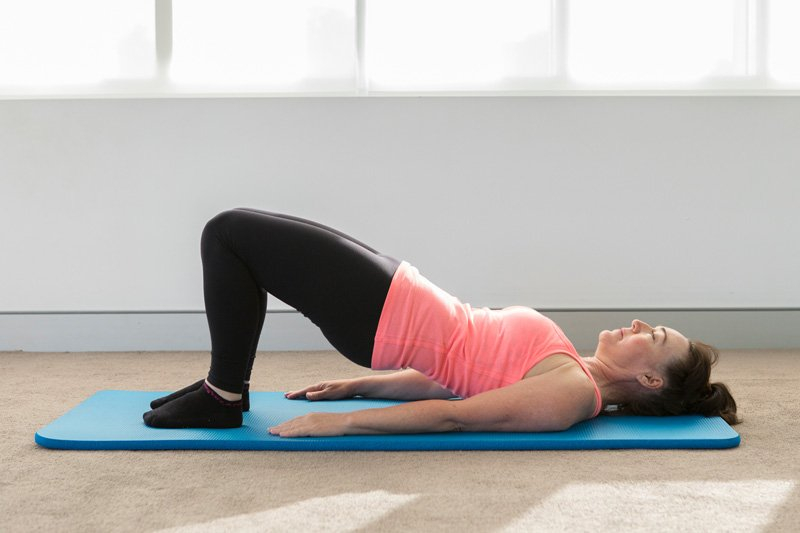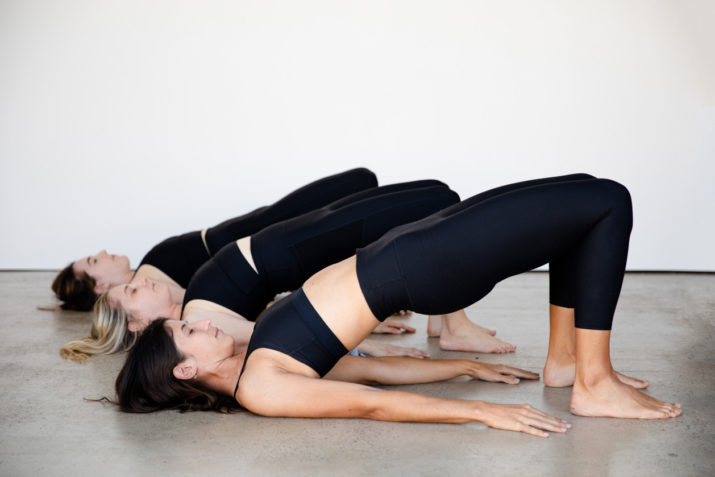Pelvic Curl

The pelvic curl mat exercise is commonly used as a moderate warm-up for the spine and abdominal muscles in Pilates sessions. To achieve a pelvic tilt, lie on your back and tighten your abs, then curl your tailbone upward until your body is in a straight line between your knees and shoulder blades. It also works the lower body and aids in breathing and movement coordination. You can do it in a series to aid people with back discomfort, in addition to using it as a warm-up. Spine stretch is a good counter stretch for pelvic curl.
If you're doing the pelvic curl correctly, the abdominal muscles should be doing the majority of the work. This distinguishes it from the similar-looking bridge exercise, which puts more emphasis on the glutes, hamstrings, and erector spine of the back. The idea is to have the back along for the ride, with adequate sequential articulation and less involvement from the glutes and hamstrings.
The purpose of pelvic curl is to learn to control your breathing and movement patterns while slowly articulating your spine. Many Pilates movements make use of this understanding. The pelvic curl can be utilized in physical therapy and back injury rehabilitation.
Pelvic curl is considered one of the fundamental Pilates exercises, but there are some mistakes that individuals make when they practice. Avoid these blunders to get the most out of this workout while avoiding injury.
- Too Much Arching
Only arch your back until your shoulder blades begin to lift off the mat. Put an end to it there. More will begin to put strain on your neck, as well as risk excessive back arching. - Excessive Speed
This should be done vertebra by vertebra, up and down. The emphasis is on bodily awareness and control. - Shoulder and Neck Tension
Throughout the workout, keep your shoulders and neck relaxed.








